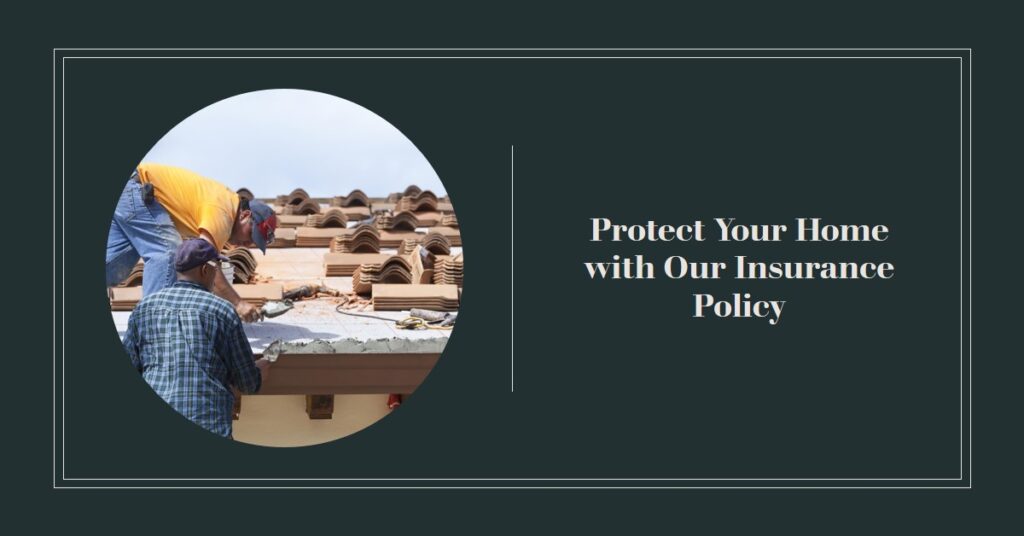Does your homeowner’s insurance policy cover roof repairs? The answer is yes but with certain conditions.

While homeowner’s insurance policies typically cover roof replacements resulting from unexpected natural events or sudden accidents, they frequently do not cover expenses related to roofs that have deteriorated over time due to general wear or neglect.
It’s essential to understand that while many policies will cover roof repairs from unforeseen events, the exact coverage often depends on the specifics of your policy and the root cause of the damage.
Introduction to Homeowner’s Insurance and Roofing
Understanding the maze of homeowner’s insurance can be daunting, but it’s integral to homeownership. At its core, insurance offers peace of mind against unforeseen damages, but the nuances lie in the fine print.
The policy is your binding contract with the insurer, laying out what is and isn’t covered. The deductible is crucial to understand, as this is the amount you’re expected to pay out of pocket before the insurance covers the rest.
When something goes awry, you file a claim—essentially a request for payment. While your coverage dictates what incidents or damages are covered, the exclusion section lists scenarios where the insurer won’t provide coverage.
Grasping these terms will allow you to navigate your policy better and understand the extent of your coverage.
What Generally Falls Under Coverage
Unforeseen Events
Natural disasters, from hurricanes to wildfires, are unpredictable and can inflict severe damage on your home’s structure, especially the roof.
If your roof is damaged due to these acts of nature, such as storms, fires, hail, or high-speed winds, your insurance will likely cover the repairs.
In urban settings, unexpected incidents like vandalism can also result in roofing damages, which are typically covered under most policies.
Exclusions and Limitations
Not all damages are covered, however. For instance, if your roof is old and nearing the end of its expected lifespan, the insurance might only cover a portion of the repair costs based on the roof’s depreciated value.
Routine wear and tear, something every homeowner should expect and budget for, isn’t covered. Additionally, if it’s determined that the damage resulted from improper installation or the use of low-quality materials, the insurance might not cover the costs.
Importance of Regular Roof Maintenance
Extending Roof Lifespan
Your roof’s longevity largely depends on the care you provide. A well-maintained roof can last decades.
Adopting maintenance routines like clearing gutters, removing debris, and addressing minor leaks or issues can go a long way in ensuring a longer lifespan.
Detecting and addressing minor issues before they grow can save significant amounts over the roof’s life.
Impact on Insurance Claims
An ounce of prevention is worth a pound of cure. If insurers find that damage resulted from negligence or poor maintenance, they might deny your claim.
Over the years, countless homeowners have faced claim denials due to a simple lack of maintenance or oversight.
Reading and Understanding Your Policy
Coverage Limits
While you might be covered, it doesn’t mean you’re covered entirely. Most policies have a coverage limit.
This is the maximum they’ll pay for a claim; any expenses beyond that will be out of your pocket. Ensure this limit aligns with the potential costs of repairing or replacing your roof.
Filing a Claim
The aftermath of roof damage is stressful, but knowing how to file a claim can alleviate some headaches.
Ensure you document everything, take photographs, and get a professional assessment. Familiarize yourself with your policy’s claim process, and remember that transparency with your insurance provider can smooth out potential disputes.
Tips for Homeowners
Regular Inspections
Just like you’d visit a doctor for a check-up, your roof occasionally needs a professional once-over.
Regular inspections can detect potential issues, ensuring minor problems don’t escalate. Aim for an inspection at least once a year or after significant weather events.
Updating Your Policy
As time progresses, so do the conditions around us. From home improvements you’ve made to changes in local hazards, these could necessitate adjustments to your policy.
An annual review can ensure you’re not underinsured or paying for unnecessary coverage.
Conclusion: Being Prepared and Informed
Knowledge is power. Comprehending the intricacies of your homeowner’s insurance policy allows you to prepare better for the unexpected.
Regular roof maintenance and understanding your policy are the best strategies.
Review your coverage, ensure regular maintenance, and always be proactive about potential issues. In doing so, you protect your home and your peace of mind.
